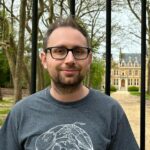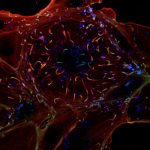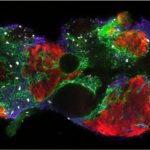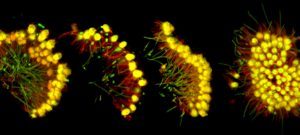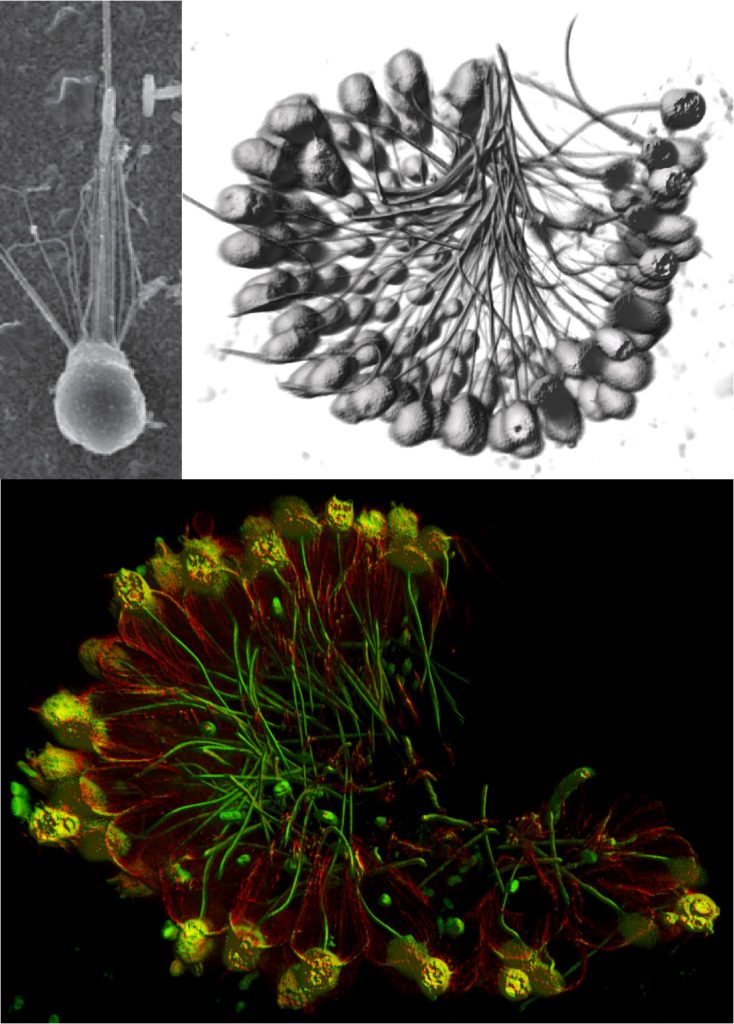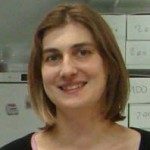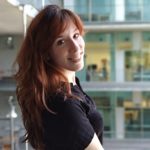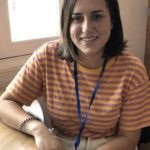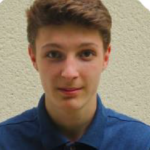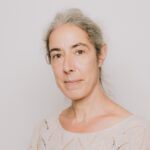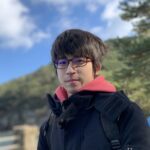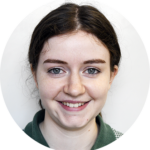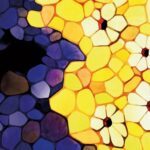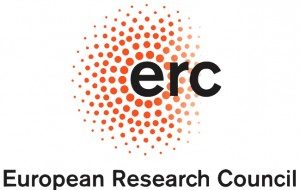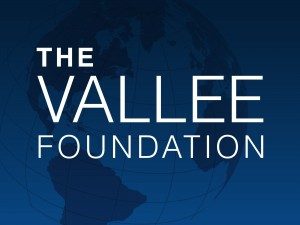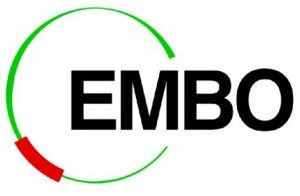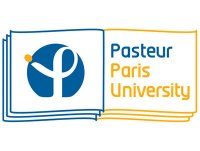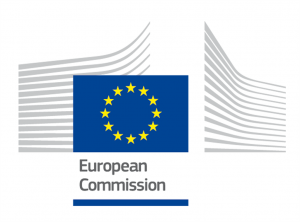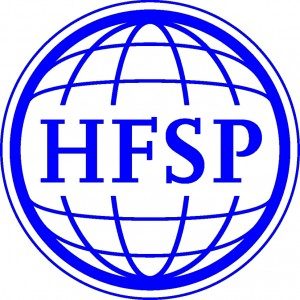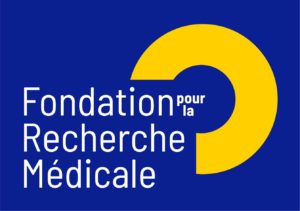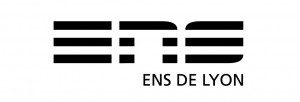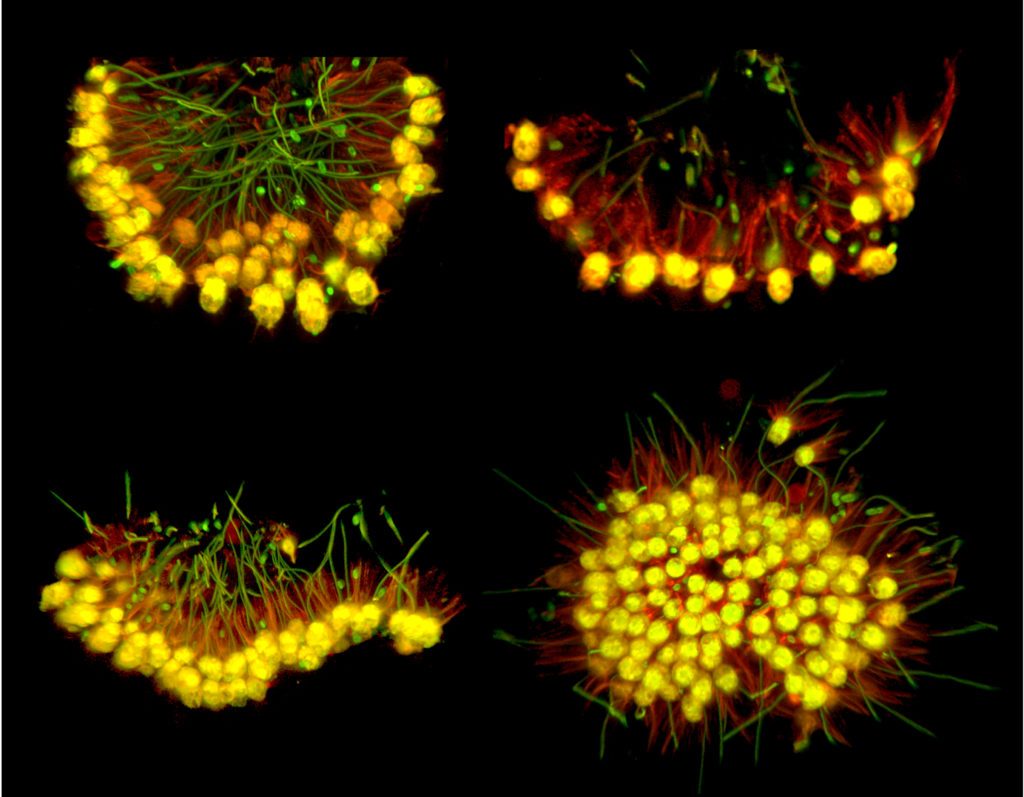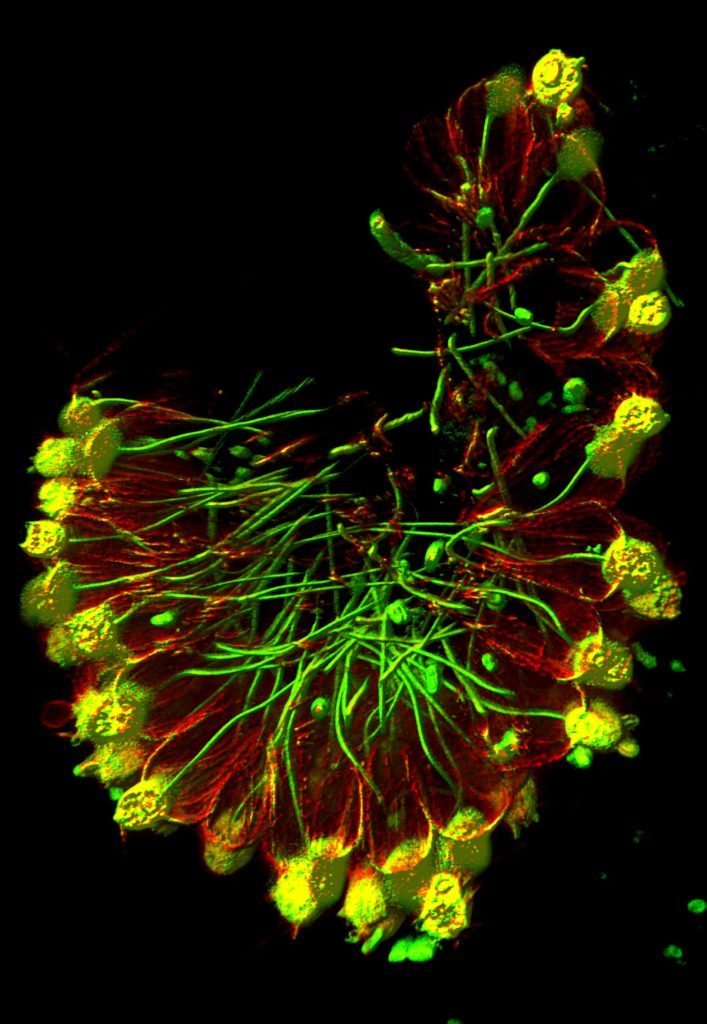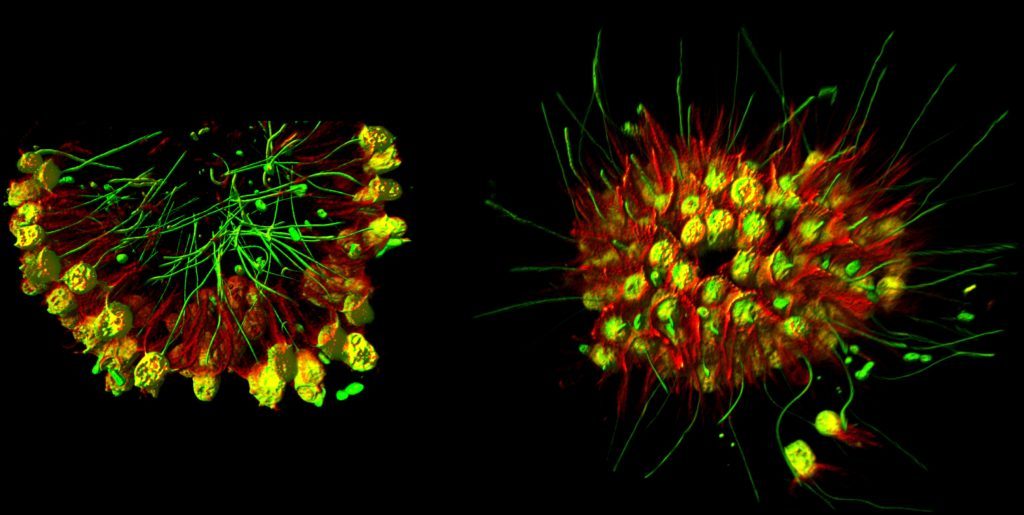Nous étudions un problème simple, mais encore non résolu : quelle était la forme des premiers animaux ? Comment les mécanismes morphogénétiques du développement animal ont-ils émergé au cours de l’évolution ? Bien que les premiers ancêtres multicellulaires des animaux aient sans doute été microscopiques (et donc trop petits pour être fossilisés), ces questions peuvent être abordées par l’étude comparative de groupes actuels. Notre équipe explore la biologie cellulaire, la morphogenèse et le comportement des choanoflagellés, les plus proches parents connus des animaux. Les choanoflagellés peuvent alterner entre modes de vie unicellulaire et multicellulaire, sont capables de différenciation cellulaire temporelle, et sont maintenant à portée des techniques de manipulation génétique. Nous cherchons à comprendre le contrôle de la forme cellulaire des choanoflagellés, comment cette forme est modulée de façon active et dynamique en réponse aux signaux de l’environnement, et comment certains choanoflagellés se développent en colonies multicellulaires capables de comportements collectifs émergents. Nous abordons ces questions par une approche comparative interdisciplinaire, appliquant des concepts et des outils issus de plusieurs disciplines (biologie cellulaire, biologie du développement, biologie moléculaire, biophysique) à multiples espèces de choanoflagellés, dont les espèces-modèles Salpingoeca rosetta et Monosiga brevicollis, ainsi que l’espèce récemment découverte Choanoeca flexa.
Postdocs et stagiaires potentiels sont encouragés à nous contacter à thibaut.brunet[at]pasteur.fr avec un CV, un bref résumé de vos centres d’intérêts scientifiques et les contacts de 1 à 3 auteur.e.s de lettres de recommandation potentiel.le.s. Pour des raisons de limite d’effectif, nous ne pouvons actuellement pas recruter de nouveaux étudiants en thèse avant 2025.
Unicellular form of S. rosetta and multicellular form of C. flexa
